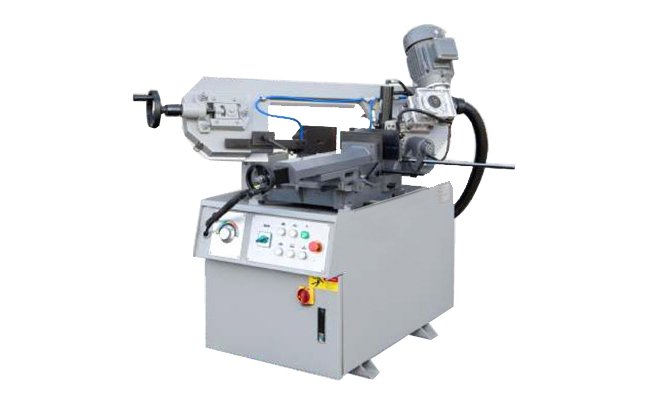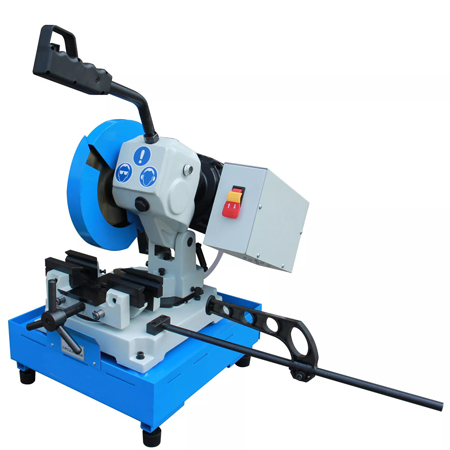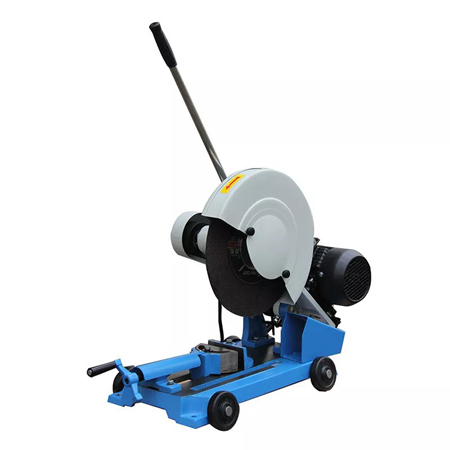How thick of a material can a band saw cut?
In short, a typical benchtop or stationary band saw in a home workshop can cut material up to 6 to 12 inches (150 to 300 mm) thick. Industrial band saws can cut through material several feet thick.
Here’s a detailed breakdown of what determines the maximum cutting capacity:

The Key Factor: Throat Capacity vs. Cutting Capacity
First, it’s crucial to understand the two main measurements of a band saw:
-
Throat Capacity: The distance from the blade to the vertical frame of the saw. This determines the width of material you can cut.
-
Cutting Capacity (or Height under the Guide): The distance from the table to the upper blade guides when they are at their highest point. This is the measurement that determines the maximum thickness a band saw can cut.

1. By Saw Type and Size
The size and type of the band saw are the primary determinants.
-
Small Benchtop Band Saws (9″ – 10″):
-
Typical Max Thickness: 4 to 6 inches (100 – 150 mm).
-
Use Case: Ideal for hobbyists, model makers, and small woodworking projects.
-
14-Inch Stationary Band Saws (The Workshop Standard):
-
Typical Max Thickness: 6 to 12 inches (150 – 300 mm). The classic 14-inch models like the Delta or Jet typically have a 6-inch capacity under the guides, but many can be fitted with a “riser block” kit to increase this to 12 inches.
-
Use Case: The workhorse for serious woodworkers and metalworkers (with the correct blade and speed).
-
Large Industrial Vertical Band Saws (18″ – 36″ +):
-
Typical Max Thickness: 12 to 24+ inches (300 – 600+ mm).
-
Use Case: Used in lumber mills, shipbuilding, and large-scale metal fabrication for resawing thick lumber or cutting large metal stock.
-
Horizontal Band Saws:
-
Typical Max Thickness: This is defined by the size of the material that can fit in the vise. Common sizes range from 4×6 inches up to 20×20 inches or more.
-
Use Case: Primarily for cutting metal bar stock, pipe, and tubing to length. The “thickness” here is the cross-sectional height of the material.

2. By Material Type
The hardness and density of the material play a huge role in practical cutting capacity.
-
Wood: A band saw can handle its maximum rated capacity in most woods. However, cutting a 12-inch thick piece of hard maple is much more demanding on the motor and blade than cutting soft pine of the same thickness.
-
Metal: The effective capacity for metal is significantly less. Cutting a 6-inch thick piece of aluminum is possible with a powerful saw and the right blade, but cutting a 6-inch solid steel bar is a job for a large industrial horizontal bandsaw or a very powerful vertical saw. Friction sawing with a special blade can be used for very thick, but not necessarily precise, metal cuts.
-
Plastics & Composites: Generally similar to wood, but some abrasive composites (like G10) will quickly wear out standard blades.
3. Other Critical Factors That Affect Practical Cutting
Even if a saw is rated for a certain thickness, you need the right setup to achieve it.
-
Blade Width and TPI (Teeth Per Inch):
-
Wider blades are stronger and better for resawing thick material as they resist twisting and track straighter.
-
Lower TPI blades (e.g., 2-3 TPI) have larger gullets (the space between teeth) which allow for better chip removal when cutting thick stock. A fine-tooth blade will clog and overheat.
-
Motor Power: A underpowered motor will bog down and stall in thick, dense material. A 1 HP motor is a good minimum for serious resawing on a 14-inch saw.
-
Blade Guides and Setup: Properly adjusted guides are essential for keeping the blade stable and preventing it from deflecting or twisting, which ruins the cut and can break the blade.
Summary Table
*Often requires a riser block for the higher end of this range.
Conclusion
To find out how thick a material your band saw can cut:
-
Check the manual for the “Cutting Capacity” or “Height under Guide.”
-
Ensure you have the correct blade: a wide, low-TPI blade for thick materials.
-
Respect the material: Don’t expect a small saw to cut thick steel effectively.
For most home workshops, a 14-inch band saw with a 6-inch to 12-inch capacity is more than adequate for the vast majority of tasks.
See our Products
